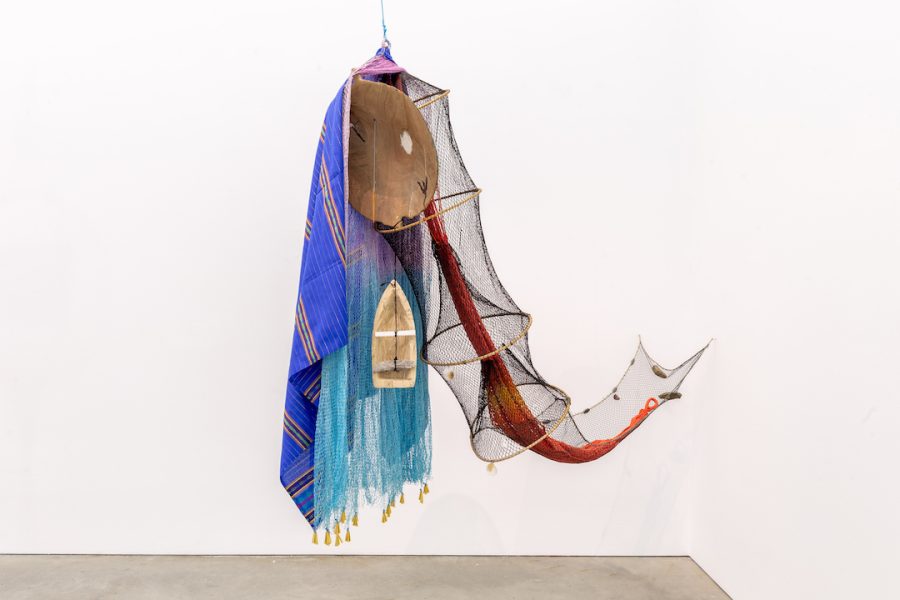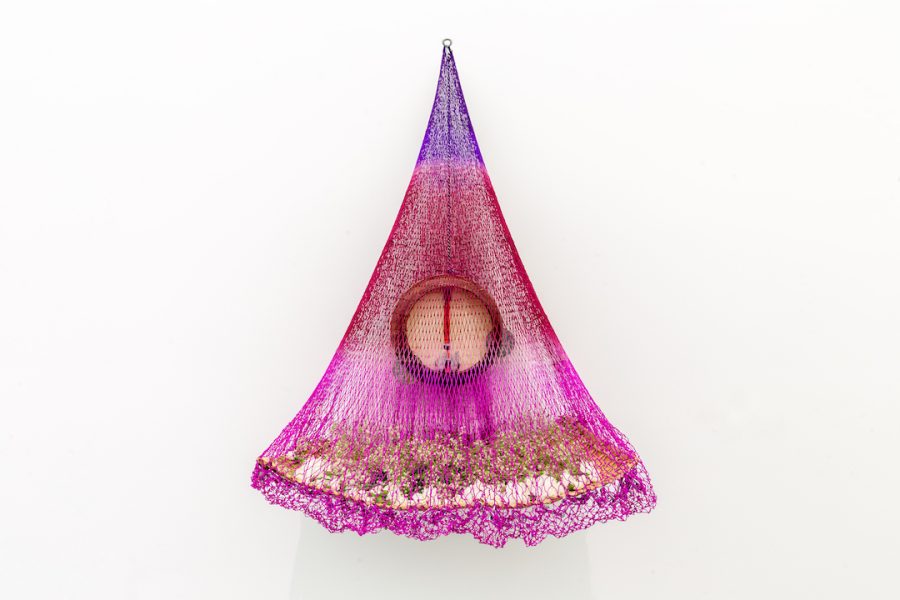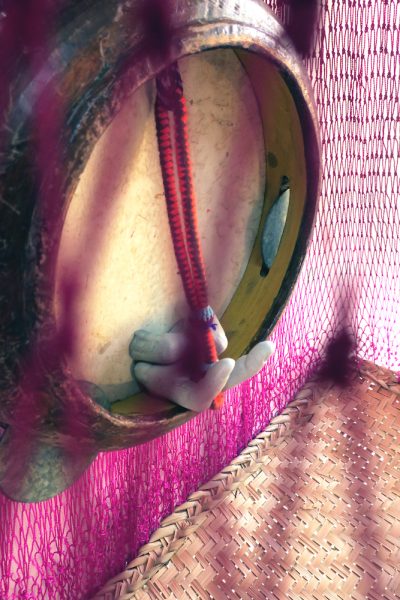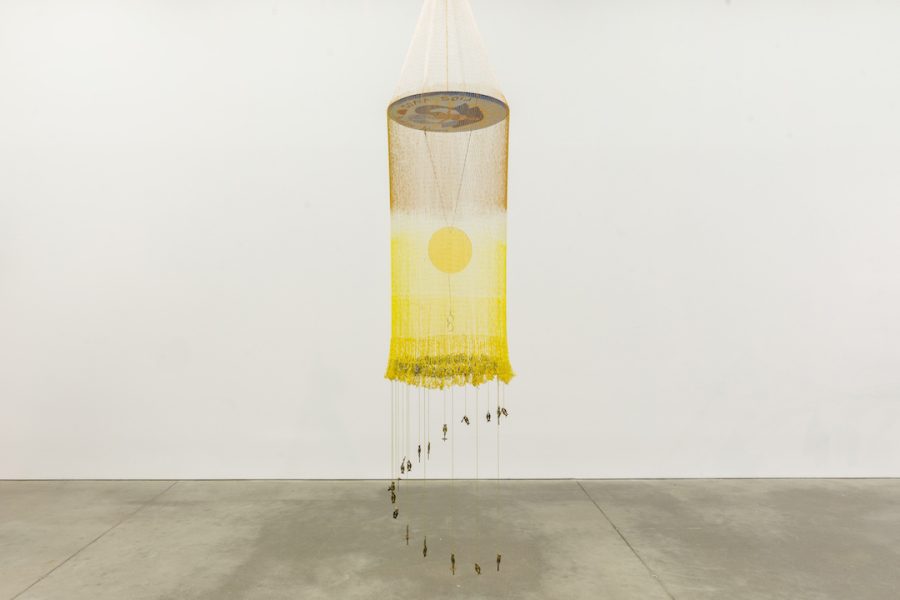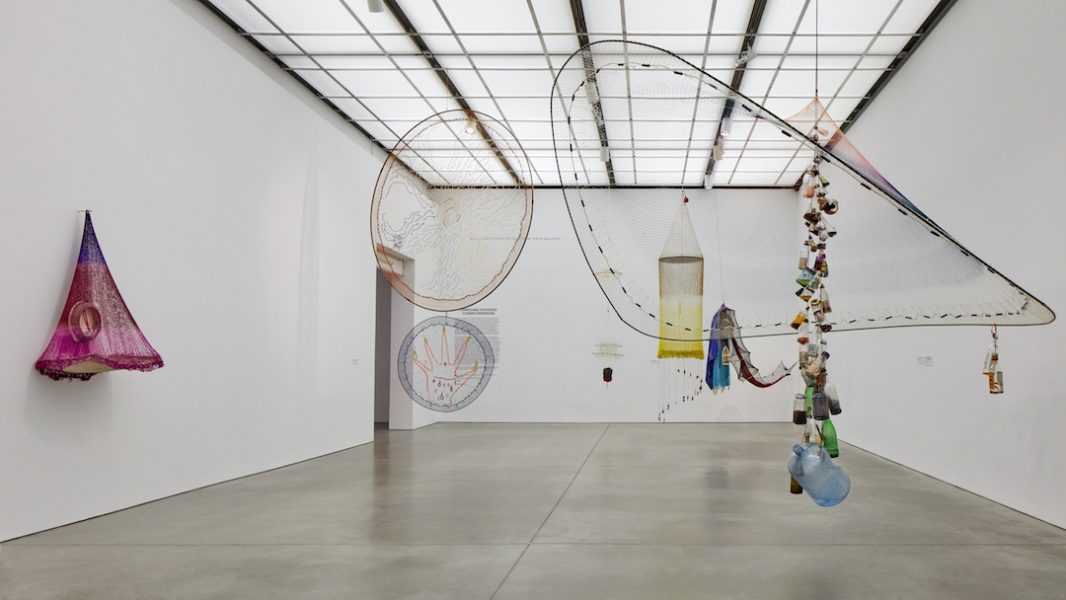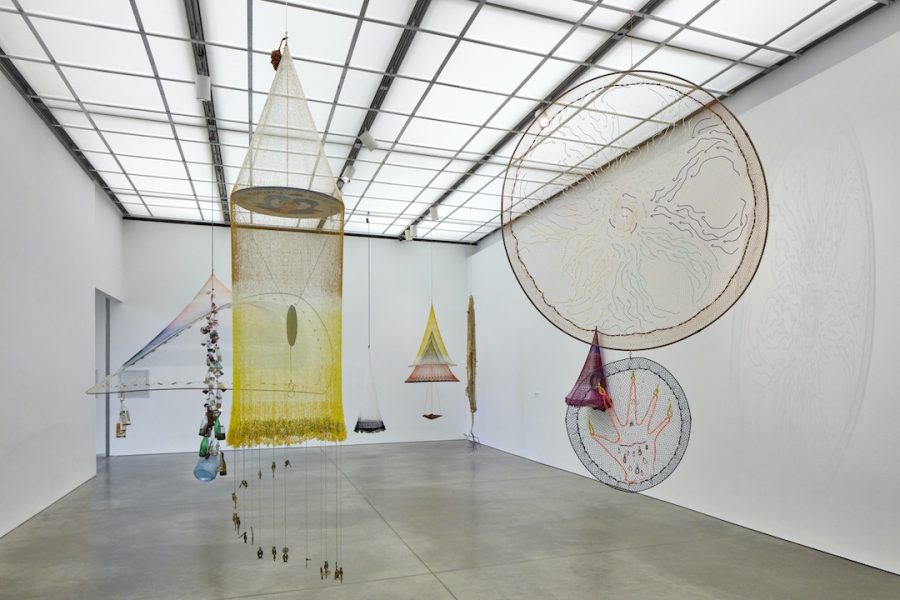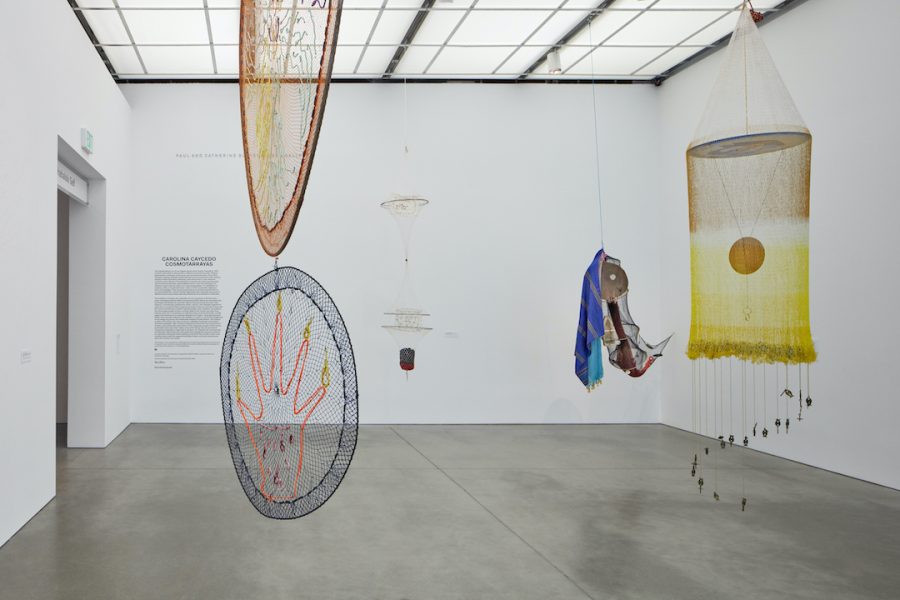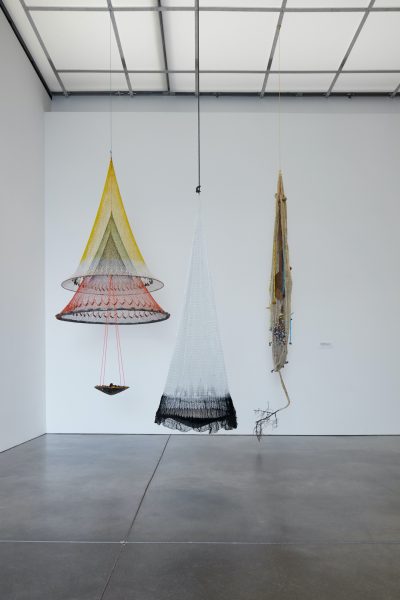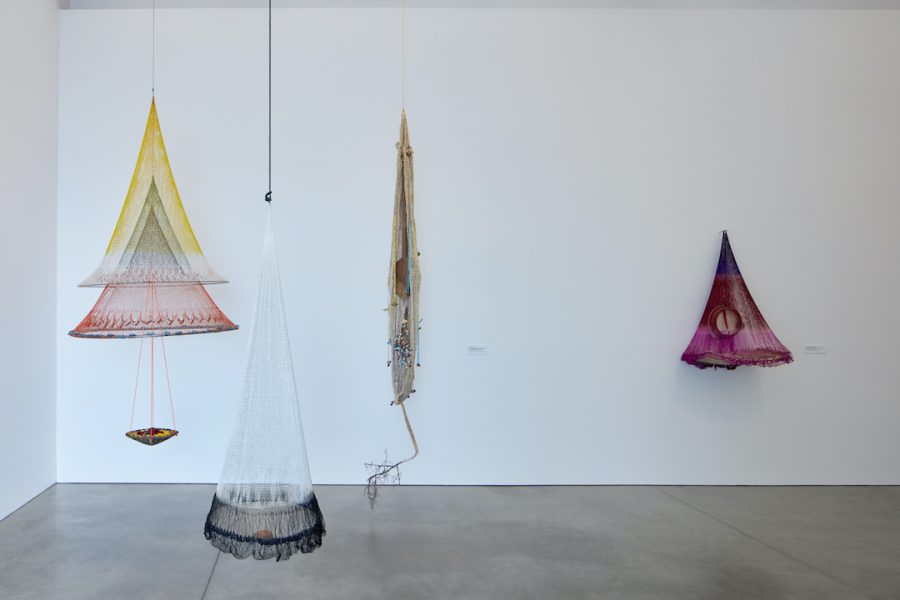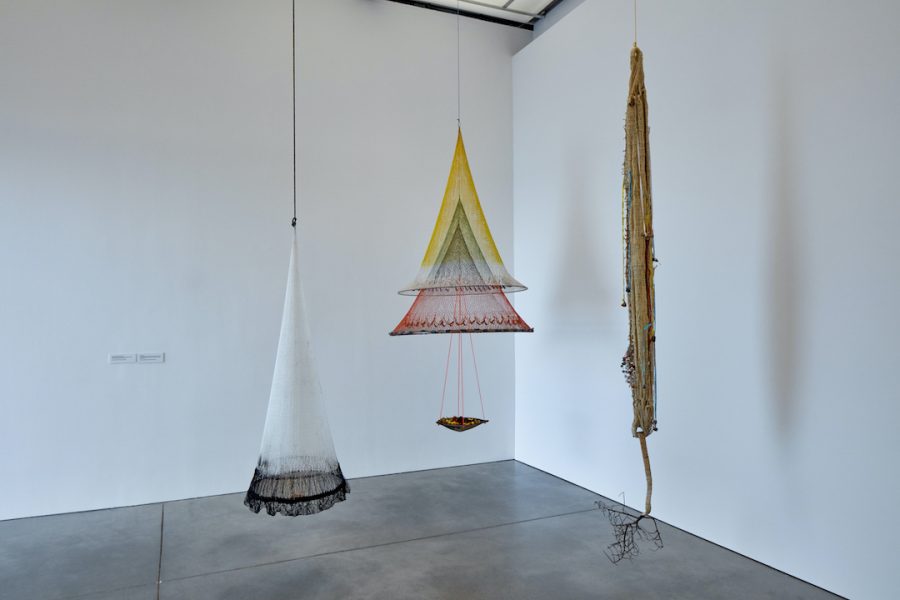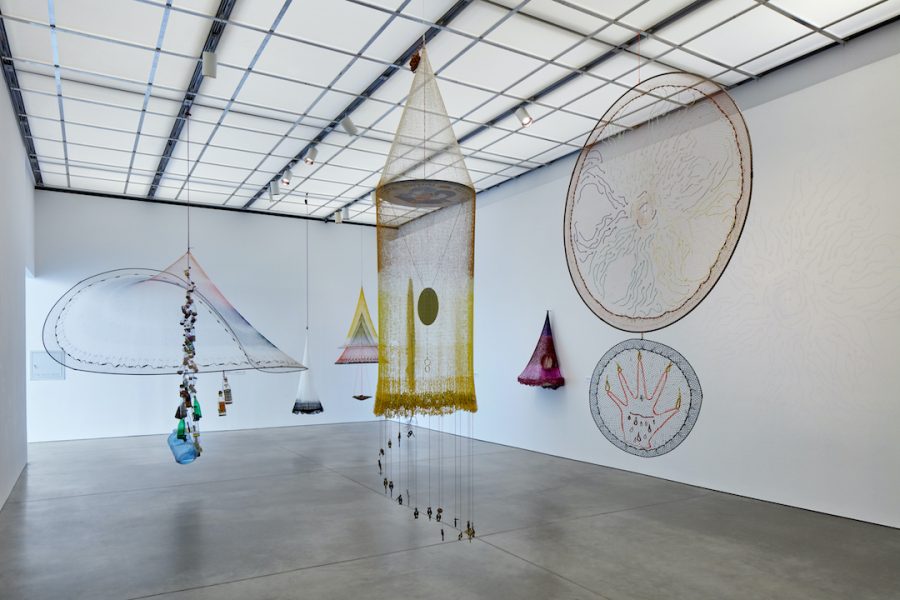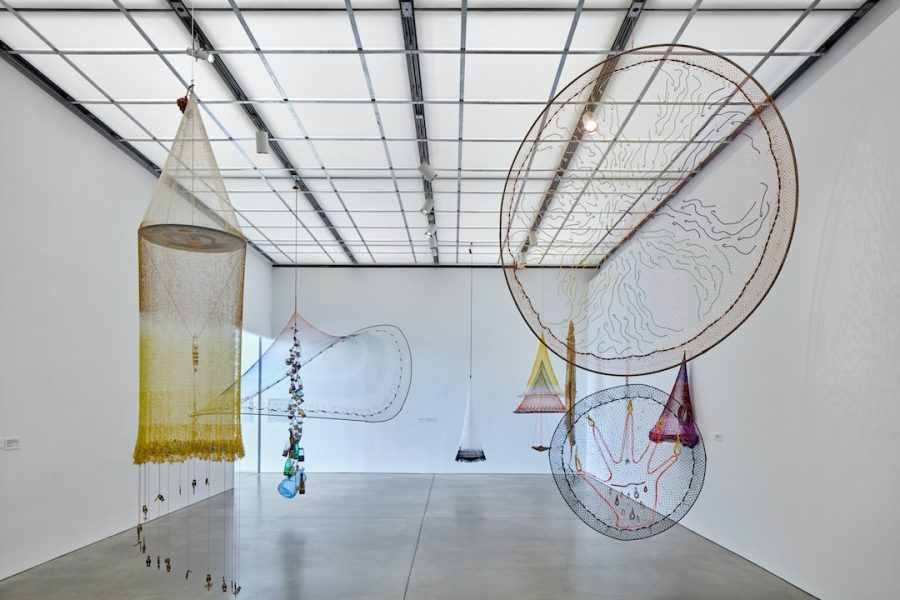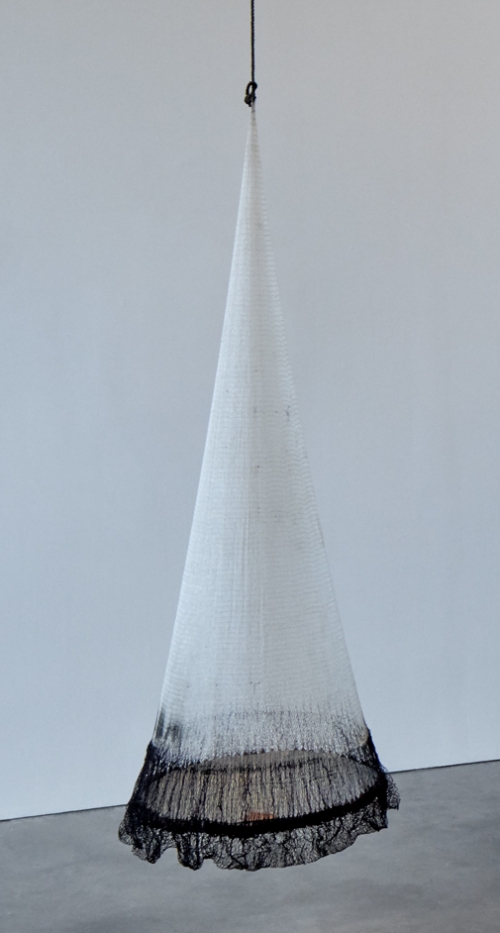The interdisciplinary practice of Los Angeles–based artist Carolina Caycedo (b. 1978, London) is grounded in vital questions related to asymmetrical power relations, dispossession, extraction of resources, and environmental justice.
Since 2012, Caycedo has conducted an ongoing project, Be Dammed, examining the wide-reaching impacts of dams built along waterways by transnational corporations, including the displacement and dispossession of peoples, particularly in Latin American countries such as Brazil or Colombia (where she was raised and frequently returns).
At the ICA, Caycedo will present the culmination of one component of the project, a series of hanging sculptures called Cosmotarrayas that are assembled with handmade fishing nets and other objects collected during field research in river communities affected by the privatization of waterways. These objects, many of which were entrusted to her by individuals no longer able to use them, demonstrate the meaningful connectivity and exchange at the heart of Caycedo’s practice. At the same time, they also represent the dispossession of these individuals and their continued resistance to corporations and governments seeking to control the flow of water and thus their way of life.
Educational materials
Intro wall text
Intro text PDF
The interdisciplinary art of Los Angeles-based artist Carolina Caycedo (b. 1978, London) is grounded in vital questions related to asymmetrical power relations, dispossession, extraction of resources, and environmental justice. Since 2012, Caycedo’s ongoing, multivalent project Be Dammed has examined the wide-reaching impacts of dams built along waterways, particularly those in Latin American countries such as Brazil or Colombia (where Caycedo was raised and frequently returns). Be Dammed takes several different forms—from the workshops and collective actions that she refers to as “geochoreographies,” to installations of sculpture, video, or handmade books—many of which incorporate indigenous forms of knowledge. These various projects grow out of what Caycedo refers to as “spiritual fieldwork” and her intimate relationships with individuals and groups in different riverine communities adversely affected by the privatization of waterways.
This exhibition comprises the culmination of one component of Be Dammed, a series of hanging sculptures titled Cosmotarrayas (2016–20) that are assembled with handmade cast fishing nets and other objects collected during the artist’s field research. Cosmotarraya combines the words “cosmos” and “atarraya” (Spanish for net) to form a compound that conveys the centrality of the net in the life of those who fish. Each Cosmotarraya is linked to specific people, rivers, traditions, and cultures, from the Kayapo people of Pará in northern Brazil to the Yoruba river spirit Ósun. Likewise, each net is connected to an individual body, woven by hand with a needle made to the thickness of an individual fisherperson’s fingers. Flying Massachusett (2020), which Caycedo realized for this exhibition, is meant as a land acknowledgement to the indigenous groups who traditionally inhabited Greater Boston. The material qualities of the fishing net—they are porous, malleable, handmade, and embody ancestral knowledge—offer a potent counterpoint to the brute-force infrastructure of dams, which disrupt the natural flow of rivers, dispossess people of their homes, and threaten their way of life. Indeed, many of the fishing nets are entrusted to Caycedo by individuals no longer able to use them. For Caycedo, the Cosmotarrayas are talismanic objects that cast visual spells: they embody the continued resistance to corporations and governments seeking to control the flow of water, create visual narratives that counter the supposed neutrality of dams, and raise consciousness about land, history, and culture.
Object labels
Object labels PDF
Cosmotarrafa Ver-o-peso, 2016
Hand-dyed fishing nets with iron rings, embroidered cotton fabric, dyed cotton rope, and stic
Collection of Tracy O’Brien and Thaddeus Stauber, Los Angeles
Flying Massachusett, 2020
Hand-dyed artisanal fishing net, artisanal fishing trap with floaters, hand-dyed artisanal hammock, traditional textile from the Zamboanga Peninsula in the Philippines, hand-carved wooden gold pan, hand-carved wooden boat, white shell, wooden needle, pebbles and stones collected from Boston Harbor, Blue Hills Reservation, and Neponset River, tin jingle cones, cotton thread, and paracord
Courtesy the artist and Commonwealth and Council, Los Angeles
Produced on the occasion of this exhibition, Flying Massachusett is a sculpture that is imagined as the physical expression of a land acknowledgement: a statement that recognizes and respects Indigenous Peoples as traditional stewards of this land and the enduring relationship that exists between Indigenous Peoples and their traditional territories. According to Caycedo, “It is an acknowledgment to Massachusett, the sacred Great Blue Hill that overlooks the Boston Harbor and that hosts my work; and to the people who traditionally inhabited the Greater Boston area, and today continue to live and relate to the lands and waters as the Massachusett Tribe at Ponkapoag, and the Natick Massachusett-Nipmuc.”
Ósun, 2018
Hand-dyed artisanal fishing net, steel chain, steel pot lid, mirror, enamel, spray paint, hoop earrings, paracord, string, and brass handles
Collection of Vibiana Molina, Los Angeles
To Drive Away Whiteness/Para a/ejar la blancura, 2017
Hand-dyed fishing net, lead weights, hand-dyed jute cord, plastic and glass bottles, liquor, banknotes, seeds, chili peppers, achiote, sand, dried kelp seeds, water (Atlantic Ocean, Charles River, and Quabbin Reservoir), hibiscus, black beans, human hair, ginseng, and paper
Hammer Museum, Los Angeles, purchased through the Board of Overseers Acquisition Fund
Undammed/Desbloqueada, 2017
Hand-dyed fishing net, lead weights, metal gold pan, Navajo sandstone, copper IUD, thread, and rope
Collection of Ann Soh Woods, Los Angeles
Limen, 2019
Three hand-dyed artisanal fishing nets, lead weights, metal rings, paracord, carved wooden gold pan (batea), and red, yellow, and orange flowers
Collection of Maria and Harry Hopper, Malibu, CA
Cosmotarrafa Hamaca, 2016
Artisanal hammock made by the Kayapo people from Para in northern Brazil, dry palm branch wrapped with reed cord, wooden paddle, Bonfim ribbons, and Brazil nuts
Courtesy the artist and Institute deVision, Bogota, Colombia
Nuestro Tiempo/Our Time, 2018
Hand-dyed artisanal fishing net, metal chain, palm mat, wool charm, tambourine, and white flowers
Collection of Tim and Maria Blum, Los Angeles
Currents, Fire and Blood, 2018
Hand-dyed and tar-dipped fishing nets, lead weights, shackles, swivel, thread, paracord, and plastic rope
Promised gift of Steve Corkin and Dan Maddalena
